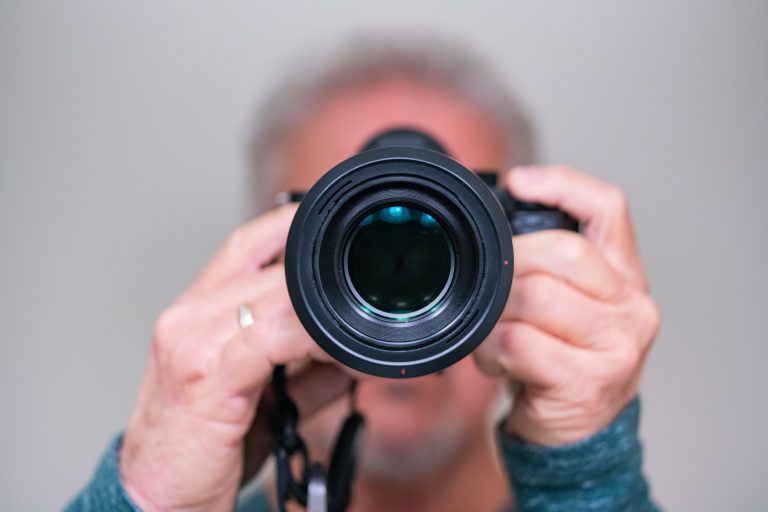Keeping Readers at Arm’s Length with Distanced POV
Fiction writers know all about POV, and in current novels, going deep is the ticket. But there are times when it’s strategic and powerful to keep distance in POV.
While it is sometimes used as an effective writing style to present an objective panorama of plot and characters (as you’ll see further down), it has the benefit of leaving readers wondering and filling in blanks.
If a reader isn’t welcomed into the landscape of a character’s mind and can only make assumptions about motivation by watching the action, gestures, and expressions of the characters, then he is left with impressions and many questions. Which is all great for creating microtension, if done well.
Using the camera shot POV is a great technique novelists can borrow from filmmakers. For some writers, the idea of showing a scene completely devoid of emotion, reaction, internalizing, and opining may seem counterintuitive—or downright counterproductive. Isn’t the whole point to tell a story up close and personal?
Sure. But there may be times when you want to see action happening without coloring it with any subjective tint. When you want a feeling of emotional distance.
Some writers excel in this technique, and their novels become a visual palette of story shown as if through an impersonal camera. The effect is often profound and evocative. Why? Because it is left to the reader entirely to come up with what isn’t shown or told, to assess the emotional content and intention of the characters and the story unfolding.
Perhaps one of the best among contemporary writers at using the POV shot is Cormac McCarthy, who won the Pulitzer for his post-apocalyptic novel The Road. I’ve read most of McCarthy’s novels, but I have to admit that when I first opened All the Pretty Horses, I got so frustrated by his impersonal style and run-on sentences that I almost gave up. At first it really irritated me, but then, after I allowed myself to go with the flow of his writing style and follow his camera, I became enthralled.
It took some getting used to, and I don’t know if many writers can “pull it off” the way he can and still engage the reader and make her care for his characters, but he makes it work.
Here are two short paragraph excerpts as examples—the first from The Road and the second from Cities of the Plain. Note the impersonality of the description as he uses the POV shot.
When he got back the boy was still asleep. He pulled the blue plastic tarp off him and folded it and carried it out to the grocery cart and packed it and came back with their plates and some cornmeal cakes in a plastic bag and a plastic bottle of syrup. He spread the small tarp they used for a table on the ground and laid everything out and he took the pistol from his belt and laid it on the cloth and then he just sat watching the boy sleep.
It was late when he got back but the light was still on in the kitchen. He sat in the truck for a minute, then he shut off the engine. He left the key in the ignition and got out and walked across the yard to the house. Socorro had gone to bed but there was cornbread in the warmer over the oven and a plate of beans and potatoes with two pieces of fried chicken. He carried the plates to the table and went back and got silver out of the dish drainer and got down a cup and poured his coffee and set the pot back over the eye of the stove where there was still a dull red glow of coals and he took his coffee to the table and sat and ate. He ate slowly and methodically. When he’d finished he carried the dishes to the sink and opened the refrigerator and bent to scout the interior for anything in the way of dessert. He found a bowl of pudding and took it to the sideboard and got down a small dish and filled it and put the pudding back in the refrigerator and got more coffee and sat eating the pudding and reading Oren’s newspaper. The clock ticked in the hallway. The cooling stove creaked. When John Grady came in he went on to the stove and got a cup of coffee and came to the table and sat down and pushed back his hat.
By using this POV shot, McCarthy just shows the bare bones of action with commentary, thereby inviting the reader to supply her own. At first glance, it may appear to be boring narrative. But the result of this technique is a masterful picture of era, locale, and, yes, character (Remember, The Road won the Pulitzer Prize in 2007). For, the things we do reveal much about who we are. POV shots are the ultimate “show, don’t tell.”
 Of course, writers don’t have to write entire novels in this style or solely using a POV camera angle. There may be a scene here and there in which this might be the perfect camera shot. Maybe you are writing a mystery and you want to show a sequence of events happening but don’t want to clue the reader in on the importance of what is being seen. Or, for that matter, perhaps not even whose point of view the camera is seeing from.
Of course, writers don’t have to write entire novels in this style or solely using a POV camera angle. There may be a scene here and there in which this might be the perfect camera shot. Maybe you are writing a mystery and you want to show a sequence of events happening but don’t want to clue the reader in on the importance of what is being seen. Or, for that matter, perhaps not even whose point of view the camera is seeing from.
Using a distanced POV shot in your story is one great tool to keep in your toolbox. But there are so many other camera lenses needed. Study Shoot Your Novel to learn how to use these effectively to create a visually stimulating experience for your readers. The key to success lies in manipulating readers’ feelings as they vicariously participate in the journey.
Remember, the objective of every scene is to lead to the high moment at the end, and it will take a number of shots to get there, and some shots often will follow after that high moment as well. Filmmakers will sometimes “storyboard,” which means they actually sketch out frames of images implying which shot will be used when, how, and focusing on what. If you’re good at drawing or can even manage a few stick figures, you could try laying out your scenes on big pieces of poster board. But you can also jot down camera shots in a list, playing around with them until you have a sequence that will meet your needs.
Whatever method you use, fill your writer’s toolbox with all kinds of neat camera shots you can use to shoot your novel.
Featured Photo by Nadine Shaabana on Unsplash.












This is a great example of how there are many tools available in writing and you can use more than one. Your Shoot Your Novel instructions are aspiration to me. I hope I can be successful in doing it.